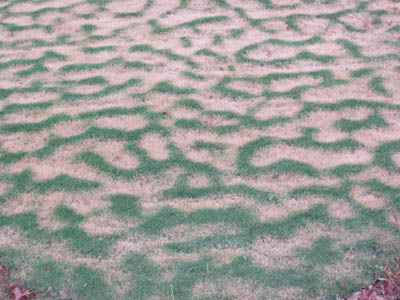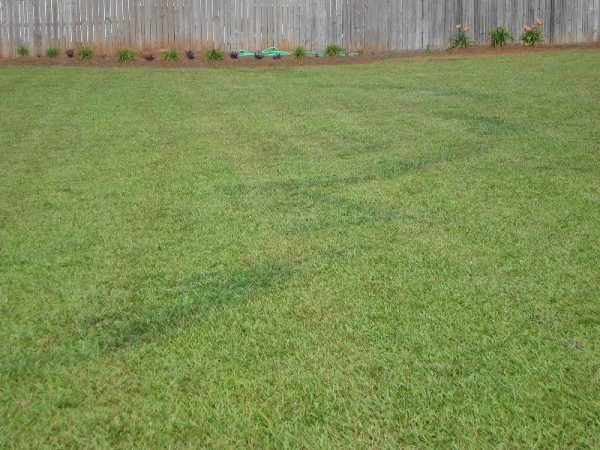Bermuda Lawn – Patchy Look in Fall

Q: This past spring I sodded my front yard in Clarkesville with ‘TifSport’ bermudagrass. I went on a trip on Oct 22 and left a lush, green yard. When I returned on Oct 31 my yard was a green and tan maze. Any idea what may have caused this?
A: The bottom line for the patchyness you found is that different bermudagrass plants in the lawn went dormant at different times. This is caused by nightime air temperatures, since your phenomenon is typically seen just after a “near-frost” event.
Remember that frost is caused by a surface becoming lower than 32 degrees and water freezing on it. Different colors of green emit heat at different rates…perhaps differently enough to cause the blades of one plant to freeze and turn brown….. while the plant next to it does not freeze. Different plants could also be growing at different rates, making them more or less susceptible to freezing temperatures.
Looking at the temperature data for Dahlonega (the nearest weather station to Clarkesville), I see that night temperatures plunged from 41 degrees on Oct 25 to 30 degrees on Oct 26 and then hovered around freezing each night until Oct 30. By Nov 1, night temperatures were back to 40 degrees. Bermudagrass plants that got too cold turned brown. Those that survived the frost were green on Nov 1.
That, to me, explains the patchyness, which I see on bermudagrass lawns each year. In any case, it does not harm the bermudagrass. After a hard freeze, your lawn will be brown throughout.














